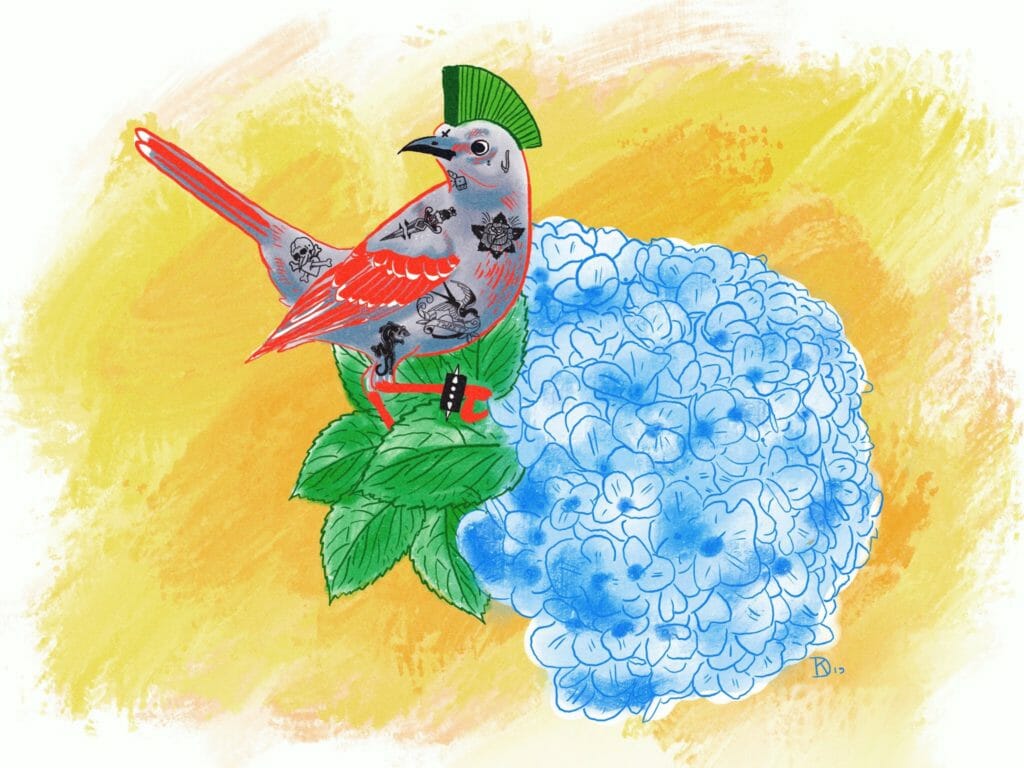“Everything divides, but onto itself.” [1]
“And yet all this is the person and the thing. There is then a duality in this person, this thing, a duality in its being. It is what it is and it is a stranger to itself, and there is a relationship between these two moments.” [2]
My life has been a constant negotiation of internal borders. A battle of self and nonself I am told. A body that cannot and will not contain itself, keep itself in order, continuous betrayal. I am riddled with autoimmune disorders, diseases that are characterized by immune system dysfunction. In other words, to put it most simply, my body is unable to recognize its own self from what is not itself. My own immune system acts upon itself as if it were foreign material. Not only is it physically confusing (my body is doing what?!), but it is psychologically as well (again, my body is doing what?!). Compounding this, there is the symptom of lupus fog, which causes memory and language problems — a general fogginess descends upon the world.
Horror Autotoxicus. That is the truth of this organism. Horror Autotoxicus indeed. A two word phrase pronounced in 1901 by immunologist Paul Ehrlich. Horror Autotoxicus describes the “autotoxins,” later defined as specific autoantibodies the immune system produces, that characterize different autoimmune disorders. For example, in the case of multiple sclerosis, the autoantibodies target neurons’ myelin sheath. For systemic lupus erythematosus, the autoantibodies may prefer the kidneys, but are game for any organ. For Hashimotos, the autoantibodies go for the thyroid.
The literature on autoimmune disorders often uses militaristic metaphors to explain to patients what is happening to them: the body-as-a-battleground, wherein the enemy is the patient\’s own self.
The literature on autoimmune disorders often uses militaristic metaphors to explain to patients what is happening to them: the body-as-a-battleground, wherein the enemy is the patient’s own self. In a 1993 Toronto Globe and Mail article, psychologist Andrew Feldmar claimed that autoimmune diseases “strike people who in their childhood were inhibited from differentiating who is their enemy, who is their friend.” [3] And, perhaps, this is just my problem. I never really knew who to trust.
Indeed, trauma takes its toll on the body. A 2009 study published in Psychosomatic Medicine found that Adverse Childhood Experiences (ACEs) increase the likelihood of developing autoimmune disorders in adulthood. [4] Since I’ve experienced flares (in autoimmune discourse, “flare” means disease activity) at multiple times in my life, displaying different manifestations of different disorders — what does that mean for me? What is the connection between my flares, my traumas, my lack of trust?
My story begins with a bug bite. Well, a bug bite I was told. But, let’s back up just a bit.
1990.
I am five or so. I am outside Crossville, Tenn., visiting my grandparents, my father’s parents, with my brother and sister, while my mom was moving out. In the family, we like to refer to this weekend as “The Weekend from Hell.” What I remember: my sister came down with scarlet fever and my brother almost drowned. I saw him floating on the top of the lake’s surface, face down. I ran to warn my dad. He was talking (flirting?) with a woman. I tugged on his sleeve. He kept brushing me off until I yelled out. I am told that at the end of this trip, I came back with a prick on my left arm. I am told that over the course of six months this prick grew into a patch, which spread, overtaking the entirety of my left arm and a patch on the left side of my torso with a scaly covering. I remember none of this. In fact, I don’t remember much of anything before this trip. And, not much of the years after, save for snapshots.
I am taken to a dermatologist. He takes a biopsy. My only memory of it is by proxy of my sister. I hear myself screaming through her ears sitting in the waiting room.
I am taken to Children’s Memorial Hospital in Chicago. One visit, while I am with my father, I am stripped to my underwear, and a team of doctors and residents come into the examination room. They photograph me.
The doctors determine that it is morphea, a form of scleroderma, an autoimmune disease. My mother still tells me it is because of a bug bite.
1991.
I am in the locker room at St. John of the Cross in Western Springs, Ill. I am in first grade. All of the girls stare at me while I change. No one speaks to me. No one gets near.
I am told to cover up in the summer. Supposedly to protect me. When taking family photographs, my grandmother tells my sister to stand in front of the parts of my body that are less-than-perfect.
I am a gymnast. I come home from practice in pain. I lie on the couch icing my legs. My mother tells me it must be growing pains.
1994.
During the fourth grade, my mom remarries and I change schools. A rumor has been spread about me. “If you touch Meredith, you’ll get her disease and die.” A one M.C. S___ started this juicy tale. Instead of staying away from this mean girl, I desperately try to befriend her, get into her inner circle. All I want is for her to accept me.
1994-2009.
There is too much to say about this time concerning trauma. Suffice it to say, 1994-2004 in particular compounded the trauma of my experiences from 1990-1994, with the addition of the family disease of addiction.
2009.
I have to move back in with my mother because a move out west failed. I’m working at a fucking bakery in the suburbs of Chicago, cycling there and back, when in the late winter/early spring my wrists start to hurt. Then, my elbows join in. Then, my fingers. Then, my shoulders. Then, knees, hips, ankles. All joints. Finally, I can’t walk up and down stairs. My fingers and toes are white and numb. I can’t eat. I have a fever. I am exhausted. I have chest pain. People tell me that my voice has changed — later it’s revealed that it’s because my lungs were functioning at 50%. My boyfriend is upset that I am in too much pain to fuck.
I knew this was an autoimmune response. I was familiar with autoimmunity; I already had one, maybe two, disorders. I already had a doctor. At this point my mother tells me that when I was a kid I had been on all kinds of medications and that I had been in pain all the time. She tells me that one day I decided to go off of them. I remember none of this. But, apparently, I stayed off medications until the day I went into the ER.
I made an appointment, but my condition was very unstable. I was convinced to go to the emergency room. My labs were out of control for autoimmune indicators and I was severely anemic, another indicator of an autoimmune flare. They gave me high doses of steroids, painkillers, and valium. After that visit, I went to my doctor, who consulted with another doctor. I walked into that appointment dead-set on a diagnosis of Rheumatoid Arthritis, since my mother told me I had been diagnosed with juvenile rheumatoid arthritis — but I have learned she is anything but a reliable narrator.
The two physicians working on my case were transparent with me. I am very fortunate for that. Not many get that opportunity. They cc’d me on all correspondence with each other. My labs tested positive for autoantibodies that indicated Hashimotos, Sarcoidosis, and Lupus, so they left me with Undifferentiated Connective Tissue Disease. In fact, at the time, this was doing me a favor. This was before it was illegal for insurance companies to dismiss someone based on pre-existing conditions, which I had been previously for my scleroderma. What they were most concerned about, however, was my low pulmonary function, only 50%, combined with the results of other tests, including multiple echocardiograms (plus one where they shot bubbles into my heart!), and my pre-existing heart murmur, all of which indicated pulmonary hypertension. This scared the fuck out of me.
So, I had a heart catheterization done. That’s when they stick a probe into your vein through your groin up into your heart and poke around and take measurements. There I was, on the table, not knocked out, staring up at my heart on the screen, watching the probe just prodding. I could tell the doctor was concerned that I was still awake. She ordered more Versed, but I’m a fucking alcholic and addict, so that shit did not knock me out. I just lay there and watched. The dye they pumped into me made my heartbeats skip around, and I felt them. I saw the probe getting stuck, and the doctor announced that it was having difficulty getting through one of my valves. In the end, it was my goddamn sticky valve that made it look like I had pulmonary hypertension, but the actual cause as to why my lung function was so low was never really explained to me. At least I didn’t have pulmonary hypertension on top of whatever else was going on, but today as I write, I still don’t know what the problem is. No one has given me any clear-cut explanations other than I have a funky valve, and that there is no “cause for concern.” WTF. When I was being tested, I was still under a heavy lupus and medicated fog, so it’s unclear to me what was going on at the time. Looking back, however, what is clear, is that I didn’t have an advocate.
Not feeling listened to is a common experience for autoimmune patients. Considering that a majority of them are women, and for some disorders, a majority of those women are women of color, the patient-doctor power dynamics are on full display.
With high doses of steroids (which made me insane btw), hydroxychloroquine (an anti-malarial drug — yep, weird, they’ve been using it for Lupus and Rheumatoid Arthritis since Eisenhower), some painkillers, high doses of ibuprofen, and scripts for benzodiazepines, I started to get better, meaning, I could walk, talk, sorta eat again. I went back to work at the bakery, but I had been accepted to graduate school for the Fall 2009, and I wanted to be there. However, my doctor warned me against going to graduate school. This. Pissed. Me. Off. Since no one was giving me any definitive answers about what was happening to me, how could they tell me what to do with my fucking life? Some people were telling me that my entire life would have to change, throwing me into panic attacks. It seemed like it was coming at me from all sides. People who thought they knew best, but with no answers, telling me how to live my life. That was my cue to push myself to the edge, show them who was sick. Since no one believed me anyways. My doctor’s notes just chalked up my symptoms to stress, not to the disease.
Not feeling listened to is a common experience for autoimmune patients. Considering that a majority of them are women, and for some disorders, a majority of those women are women of color (90% of lupus patients are women and it is two to three times more prevalent among women of color), the patient-doctor power dynamics are on full display. In the 1950s, for example, physicians believed that rheumatoid arthritis afflicted women who had overstepped their boundaries; they were trying to join the workforce too aggressively; they were trying to be like men. As one doctor put it in a 1955 volume of Journal of Chronic Diseases, women with RA were said to have “rejected the ‘female role’ and shown ‘masculine protest reaction.’” [5] Instead of listening to these women and respecting their agency, these doctors suggested that claiming agency was the very source of illness in these women.
More than just a sexist relic from the \’50s, this dismissive and infantilizing attitude has persisted in the study of autoimmune conditions.
More than just a sexist relic from the ‘50s, this dismissive and infantilizing attitude has persisted in the study of autoimmune conditions. In 1977’s Lupus: The Body Against Itself, Blau and Schultz advise an almost monastic life for women living with this condition:
“The lupus patient is generally advised to avoid situations producing great anxiety and seek prompt therapy or counsel if she finds herself in a stressful situation (obviously, what produces anxiety in various individuals will differ). Similarly, infectious ills, injuries, and undue fatigue may produce lupus flare-ups, so that they, too, must be avoided as far as possible. These are, of course, events that any prudent individual tries to avoid; it is simply a matter of degree: general measures such as a balanced diet, regular physical and dental checkups, exercising of generally recommended safety precautions, etc., are helpful. Greater-than-average time allotted for sleep, and occasional rest periods during the day, are often necessary to avoid fatigue.” [6]
By metrics like these, whenever the patient comes back to the office with a complaint, it is labeled as “stress.” A note in my chart: “She has some arthralgias which are episodic, malaise and fatigue, increasing anxiety and depression, a lot of pressures since she is applying for a PhD program.” Apparently, stress is what triggers lupus and stress is what’s to be eliminated in order to get better. Curiously, it simultaneously appears that symptoms of stress are not lupus, though those same symptoms during the flare were attributed to the autoimmune disease.
The relationship between stress and disease activity in lupus patients is still being assessed today. [7] A 2011 study conducted in Israel and published in the journal Lupus examines “the role of SOC [Sense of Coherence] on adherence to medical and lifestyle regimen among SLE [lupus] patients.” [8] The SOC essentially is defined as a “global life orientation that expresses the extent to which one has a pervasive, enduring thought dynamic sense of confidence” that one’s internal and external life is satisfiably predictable, that one will be able to meet the demands of life, and that these demands are worth living. [9] The study contends that emotional distress (as well as income) are the only factors that have significantly negative effects on lupus activity — in other words, higher emotional distress = higher disease activity.
However, in another study in the same volume of Lupus entitled “Common mental disorders and psychological distress in systemic lupus erythematosus are not associated with disease activity,” author E. Jarpa states that psychiatric disorders, including depression, are not to be associated with disease activity. [10] If this is true, then why is the medical community still insisting upon the same “rest cure” that was being advocated in the ‘50s — that, in fact, has been suggested for women since the late 1800s for conditions of hysteria and other nervous illnesses? Shall the autoimmune patient be “\’forbidden to ‘work’ until [she] is well again,” like the protagonist in Charlotte Perkins Gilman’s “The Yellow Wallpaper,” the 1892 short story that famously took to task the ways in which women were isolated and infantilized in treating their “nervous” conditions? [11]
Is the general population\’s (and physicians\’) dismissal of these diseases a reinvestment in the historical attitude of blaming the patient?
The discourse surrounding hysteria and neurasthenia in the late 19th through 20th centuries seems relevant in the case of contemporary discourses about autoimmune disorders, and may be particularly pertinent to the diagnosis and treatment of fibromyalgia and chronic fatigue syndrome. Fibromyalgia, though treated in rheumatology departments, is said to be, by many, a “fake” disease — made-up, a psychosomatic manifestation of early childhood trauma and sexual abuse. In fact, it is noteworthy that consumer/popular health websites including PubMed Health and MayoClinic.com link fibromyalgia to trauma or PTSD, while the “official” National Fibromyalgia Association lists physiological causes involving “neuroendocrine/neurotransmitter dysregulation.” Elaine Showalter claims that “the name of the symbolic female disorder may change from one historical period to the next,” and it may be appropriate to consider rheumatologic-based disorders (autoimmune disorders as well as fibromyalgia) as a new sort of manifestation of this trend. [12] Melissa Anne Goldstein writes in her autobiographical account of her experience of lupus, Travels with the Wolf: A Story of Chronic Illness, [13] published in 2000, that one of her physicians was disturbed by her “cheerful disposition” and claimed that “perhaps [she] was burying deep-seated concerns about [her] illness and converting them into physical symptoms.” [14] Goldstein experienced extreme seizures due to her lupus (lupus can affect the central nervous system), but she tells us in her narrative that her physicians dismissed her complaints. They even went so far as to say that “She’s fooled us before. It’s a pseudoseizure.” [15] However, she recounts that her psychiatrist dismissed these psychosomatic claims and believed that her seizures and physiological illness were in fact not caused by her mental state.
Is the general population’s (and physicians’) dismissal of these diseases a reinvestment in the historical attitude of blaming the patient? We can see this attitude so clearly illustrated in a 1965 letter to the British Medical Journal, in which the author claims that the hysteric patient is merely adapting behavior of the sick because “To be accepted as sick confers many privileges; enables one to avoid responsibilities; and entitles one to receive help, or attention, or sympathy, sometimes all three.” [16] Once I was sitting on the bus in a handicapped seat, shortly after recovering from my ER visit. Someone yelled at me; told me that that seat wasn’t meant for me. On the surface, I don’t come across as sick and suffering to outsiders, but on the inside, that is a different story. It made me question what I deserve and what I don’t; the validity and reality of my experience. It was an interpellation, a “hey you!” that stopped me in my tracks. With the passing of time, therapy, and a whole lotta breakdowns, now I know that my experience is valid and that the baggage of my childhood trauma is what brought me to my knees in that moment, my previous experiences with not knowing who to trust and being told that what I felt was wrong and what I experienced didn’t happen. As I quoted above, I sure didn’t know friend from foe, and my body took that trauma on, too.
And, it sucks to be sick. Sometimes the wolf has bitten us and we must surrender. And it is hard, so fucking hard, to surrender to the nonself, because it is none other than your own fucking self, while simultaneously being other.
Arthur Silverstein writes in “A History of Immunology” that “[i]t became apparent that the distinction between self and not-self was a learned rather than a genetically programmed phenomenon.” [17] What does this mean? That the self is learned through the experience and recognition of the nonself or not-self? In states of flare, or in coming to terms with the boundaries of my internal condition, I come to know myself? This is a painful process, one fraught with trauma, grief, and surrender.
It took me years of pushing myself to the edge over and over again, trying to prove to doctors and myself that I was sick, to come to terms with my condition. Years of messing with my borders and boundaries, trying to control and manipulate my internal machinations. I couldn’t surrender to what it really meant to have a condition that is inherently ambiguous. I had to get to the bottom of it. But now, my labs are “stable,” meaning that autoantibodies are always present, but they are just not off the charts — because I take my medications and generally take care of my wellbeing in the best way I can. Today, I can accept that it is a situation that I need to constantly manage, a fluctuation of selfhood that rests underneath my conscious awareness. Selfhood does not only reside in our consciousness; our body carries knowledge, too.
ENDNOTES
[1] Gilles Deleuze and Félix Guattari, Anti-Oedipus: Capitalism and Schizophrenia, trans. Robert Hurley, Mark Seem, and Helen R. Lane (Minneapolis: University of Minnesota Press, 1983), 76.
[2] Emannuel Levinas, “Reality and Its Shadow,” Clive Cazeaux, ed., The Continental Aesthetics Reader (New York: Routledge, 2000), 121.
[3] G. Maté, “Why does the body sometimes declare war on itself?”, Toronto Globe and Mail (June 14, 1993), 16 quoted in Emily Martin, Flexible Bodies, 271.
[4] Shanta R. Dube et al., “Cumulative Childhood Stress and Autoimmune Diseases in Adults,” Psychosomatic Medicine, Vol. 71, No. 2 (Feb 2009): 243-250.
[5] Stanley H. King, “Psychosocial Factors Associated with Rheumatoid Arthritis: An Evaluation of the Literature,” Journal of Chronic Diseases, Vol. 2, No. 3 (1955), quoted in Mary Felstiner, Out of Joint: A Private & Public Story of Arthritis (Lincoln, NE: University of Nebraska Press, 2005), 131.
[6] Sheldon Paul Blau and Dodi Schultz, Lupus: The Body Against Itself (Garden City, NY: Double Day, 1977), 34.
[7] As I mentioned before, the majority of lupus patients are women. Of this percentage, a majority are women of color. Though, I do not have the time to address the issue of race in this paper, it is a demographic finding that is significant. See for example, Hayley Mitchell Haugen, ed., Perspectives on Diseases & Disorders: Lupus and Theresa Foy DiGeronimo, New Hope for People with Lupus.
[8] I. Duvdevany, M. Cohen, and A. Minsker-Valtzer, “Psychological correlates of adherence to self-care, disease activity and functioning in persons with systemic lupus erythematosus,” Lupus, vol. 20 (2011), 19.
[9] A. Antonovsky, Unraveling the Mystery of Health (San Francisco: Jossey-Bass, 1987), 19 quoted in I. Duvdevany, M. Cohen, A. Minsker-Valtzer, and M. Lorber, “Psychological correlates of adherence to self-care,” 15.
[10] See E. Jarpa et al, “Common mental disorders and psychological distress in systemic lupus erythematosus are not associated with disease activity,” Lupus, vol. 20 (2011): 58-66. I do not mean to conflate depression with emotional distress, but it is worth pointing out that these two factors (depression and emotional distress) are so divided. Further, these studies point to the separation of physician and psychologist/psychiatrist accounts of the disease. In the case of depression, many claim that it is unclear whether lupus actually causes depression or if depression is a result of changes in physical activity and perceptions of self.
[11] Charlotte Perkins Gilman, “The Yellow Wallpaper,” (New York: The Feminist Press at the City University of New York, [1892] 1973), 10.
[12] Elaine Showalter, The Female Malady: Women, Madness, and English Culture, 1830-1980 (New York: Pantheon Books, 1985), 4.
[13] The name systemic lupus erythematosus derives from the word lupus for wolf. In early observations of the disease, the red butterfly rash that often appears over the bridge of the nose and cheeks was called the wolf bite, thus conferring the name of the disease. See the appropriately titled chapter “Systemic Lupus Erythematosus: The Red Wolf” in Robert G. Lahita and Ina Yalof, Women and Autoimmune Disease: The Mysterious Ways Your Body Betrays Itself, 116-31.
[14] Melissa Anne Goldstein, Travels with the Wolf: A Story of Chronic Illness (Columbus, OH: Ohio State University Press, 2000), 14.
[15] Ibid., 42.
[16] L. J. F. Warnants and D. H. Marjot, “Diagnosis of Hysteria,” The British Medical Journal, vol. 2, no. 5458 (Aug. 14, 1965), 422.
[17] Arthur M. Silverstein, A History of Immunology (San Diego: Academic Publishers, 1989), 74.
We are an independent, largely volunteer-based, women-led publication that provides free coverage to our readers. If you enjoy our work and want to join our mission, donate to help us support the artists and writers who contribute to our platform.




